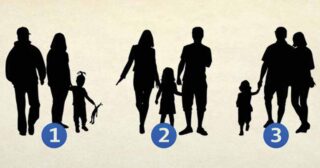How to Recognize a Fake Apology
Recognizing a fake apology can be challenging because it often seems sincere on the surface but lacks genuine remorse or accountability. Fake apologies may be used to avoid responsibility, manipulate others, or simply move past a situation without truly addressing the underlying issue. Here are some signs that an apology might be fake:
1. Shifting Blame or Making Excuses
- What It Looks Like: Instead of fully taking responsibility, the person may say things like, "I’m sorry, but you made me do it," or "I wouldn’t have done that if you hadn’t..."
- Why It’s Fake: A genuine apology involves accepting responsibility without trying to justify or excuse the behavior. Shifting the blame onto you or external factors shows a lack of accountability.
2. Lack of Specificity
- What It Looks Like: The person may give a vague apology, saying, "I’m sorry for whatever I did" or "I guess I’m sorry."
- Why It’s Fake: Genuine apologies are specific and address the exact issue at hand. Vague apologies suggest the person either doesn’t understand or isn’t willing to fully acknowledge what they did wrong.
3. They Use "If" Statements
- What It Looks Like: A fake apology often includes phrases like, "I’m sorry if I hurt you" or "I’m sorry if you felt that way."
- Why It’s Fake: The word "if" shifts the responsibility onto the person who was hurt, implying that their feelings may not be valid. A real apology acknowledges the harm caused without questioning its legitimacy.
4. They Focus on Moving On Quickly
- What It Looks Like: The person may say things like, "Let’s just forget about it" or "Can we move past this already?"
- Why It’s Fake: This shows that they’re more concerned about ending the conflict than about making amends. A genuine apology involves taking time to understand the impact of their actions and working to restore trust.
5. No Change in Behavior
- What It Looks Like: Even after apologizing, the person continues the same behavior that caused the issue in the first place.
- Why It’s Fake: A sincere apology is followed by a commitment to change. If their actions don’t change, it’s a sign that they weren’t really sorry—they just wanted to say the words and move on.
6. They Apologize to Silence You
- What It Looks Like: The person says "sorry" just to end the conversation or avoid further discussion. It may sound dismissive, like "Fine, I’m sorry. Can we drop it now?"
- Why It’s Fake: This kind of apology isn’t about addressing the issue; it’s about silencing you and avoiding any accountability. Genuine apologies should invite open communication, not shut it down.
7. They Turn Themselves Into the Victim
- What It Looks Like: During the apology, the person makes themselves seem like the one who has been wronged or who has suffered the most. They might say things like, "I’m the one who’s really hurt here" or "It’s hard for me to even apologize."
- Why It’s Fake: Shifting the focus to their own feelings takes attention away from the harm they caused, showing that they are more focused on their own discomfort than on making things right.
8. They Expect Immediate Forgiveness
- What It Looks Like: The person expects you to forgive them right away and gets frustrated or angry if you don’t. They might say, "I apologized. Why aren’t you over it yet?"
- Why It’s Fake: Real apologies recognize that forgiveness takes time, especially if the harm was significant. If they demand instant forgiveness, it’s likely they’re more concerned with clearing their conscience than with your feelings.
9. They Apologize Without Empathy
- What It Looks Like: The apology sounds mechanical or lacks emotional depth. They might say the right words, but their tone is cold or detached, showing no real concern for how they hurt you.
- Why It’s Fake: A real apology involves empathy and understanding of the other person’s pain. If they’re emotionally distant or seem disinterested, it’s likely they don’t truly feel sorry.
10. They Use Apologies to Manipulate
- What It Looks Like: Sometimes, a fake apology is used to manipulate the situation. They might say things like, "I said I’m sorry, now you owe me" or "I’ve done my part, now it’s your turn."
- Why It’s Fake: Apologies are meant to repair relationships, not as a tool for manipulation. If they use the apology to gain leverage or get something from you, it’s a sign that the apology isn’t genuine.
Conclusion
A real apology involves taking full responsibility for one’s actions, expressing genuine remorse, and committing to change. A fake apology, on the other hand, focuses on deflecting blame, minimizing the issue, or moving past the situation without real resolution. Recognizing these signs can help you distinguish between someone who is truly sorry and someone who is just saying the words without meaning them.










